Village people: Stephen Shore reveals unseen photographs of Luzzara
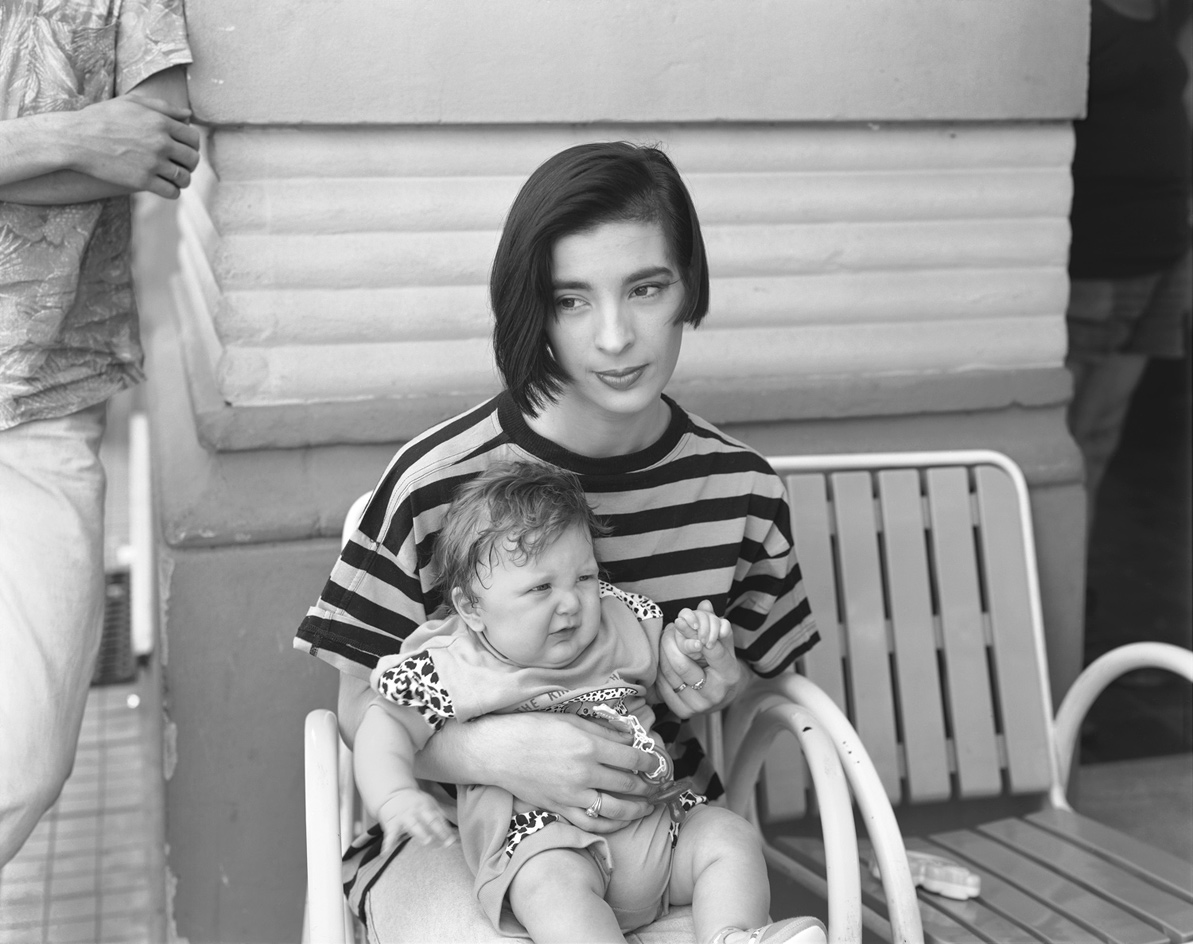
A modest Italian village in the province of Reggio Emilia, Luzzara would likely still exist in relative obscurity if it were not for American photographer Paul Strand. Published in 1955, it was his photo-book, Un Paese: Portrait of an Italian Village, which first brought the rural commune to the fore.
Forty years later, Luzzara and its residents played muse once again as another American photography master, Stephen Shore, turned his lens on the townspeople, streets and squares. Now, a new limited-edition tome published by Stanley/Barker revisits the 1993 series, simply named after the town, including a number of never-before-seen photographs.
‘There was no way I could approach Luzzara as though I was not familiar with Strand's work,’ explains Shore. ‘At the same time, even though I was going to Luzzara exactly forty years after Strand, I was not interested in producing a re-photographic survey.’
Although the town remained virtually unchanged over four decades, Shore’s images of Luzzara still feel distinctly nineties – see the boldly printed shirts that seem to shriek colour even in black and white. ‘A key feature of Italian life, at least to my New World eyes, is the presence of the traditional within the modern,’ says Shore. ‘My aim, then, was to produce a companion volume to Un Paese; to produce a group of pictures, which to the limit of the subjectivity of my vision, supplement Strand's work.’
One could almost weave a multi-generational tale between his and Strand’s works. Says Shore: ‘In a certain way, Strand's work does not need simple updating, because the kinds of people and farms and landscapes he photographed still exist in very much the same form today. But, they exist side by side with the modern world.’

Luzzara was first made famous by another American photography master, Paul Strand, forty years earlier. Although Shore was admittedly familiar with his work, he explains, ’I was not interested in producing a re-photographic survey’
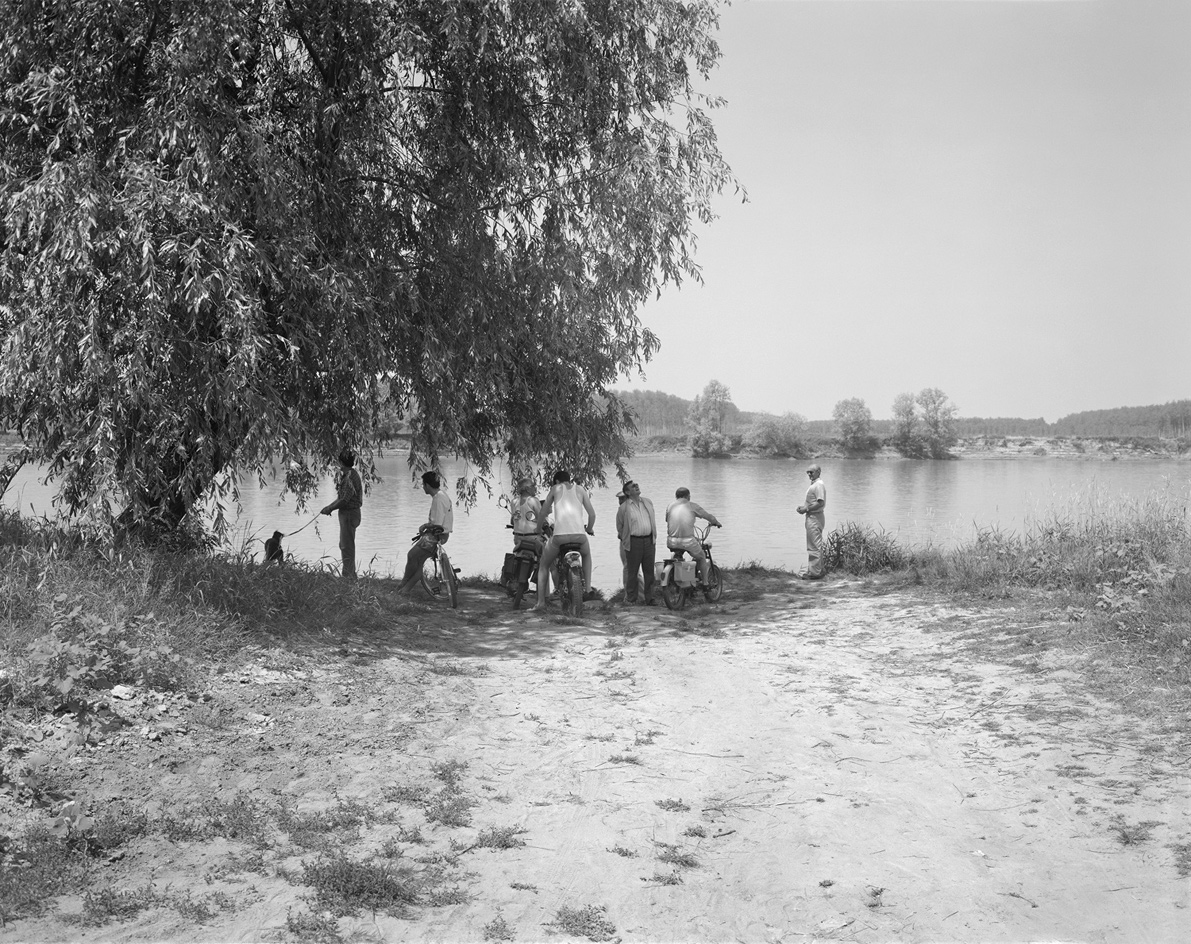
Luzzara residents gather by the Po, the longest river in Italy
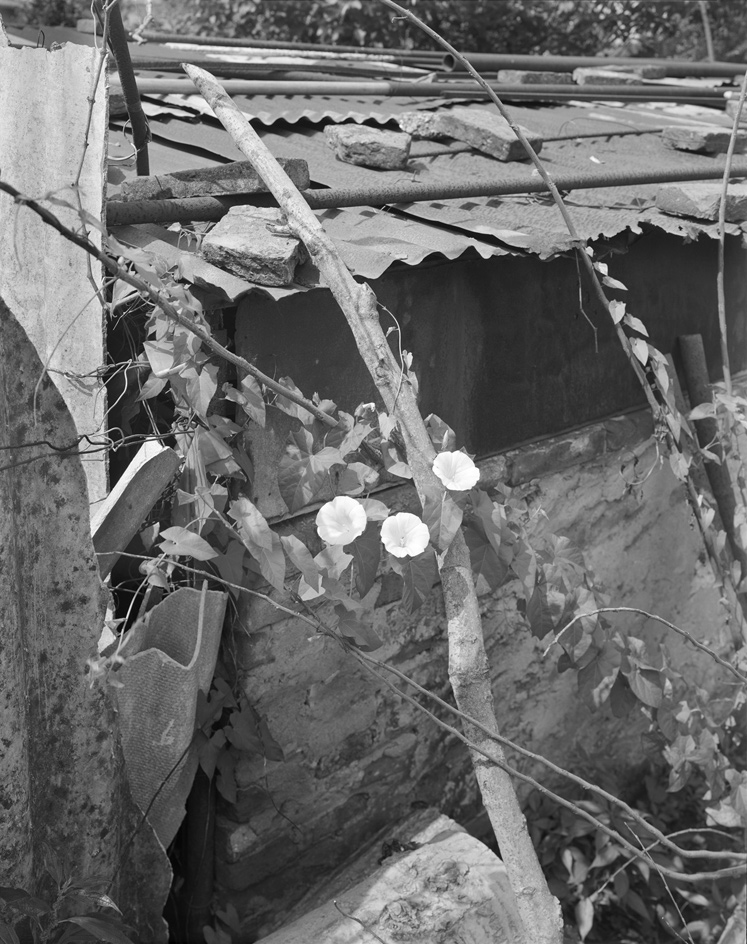
Moonflowers bloom in the remains of a dilapidated building
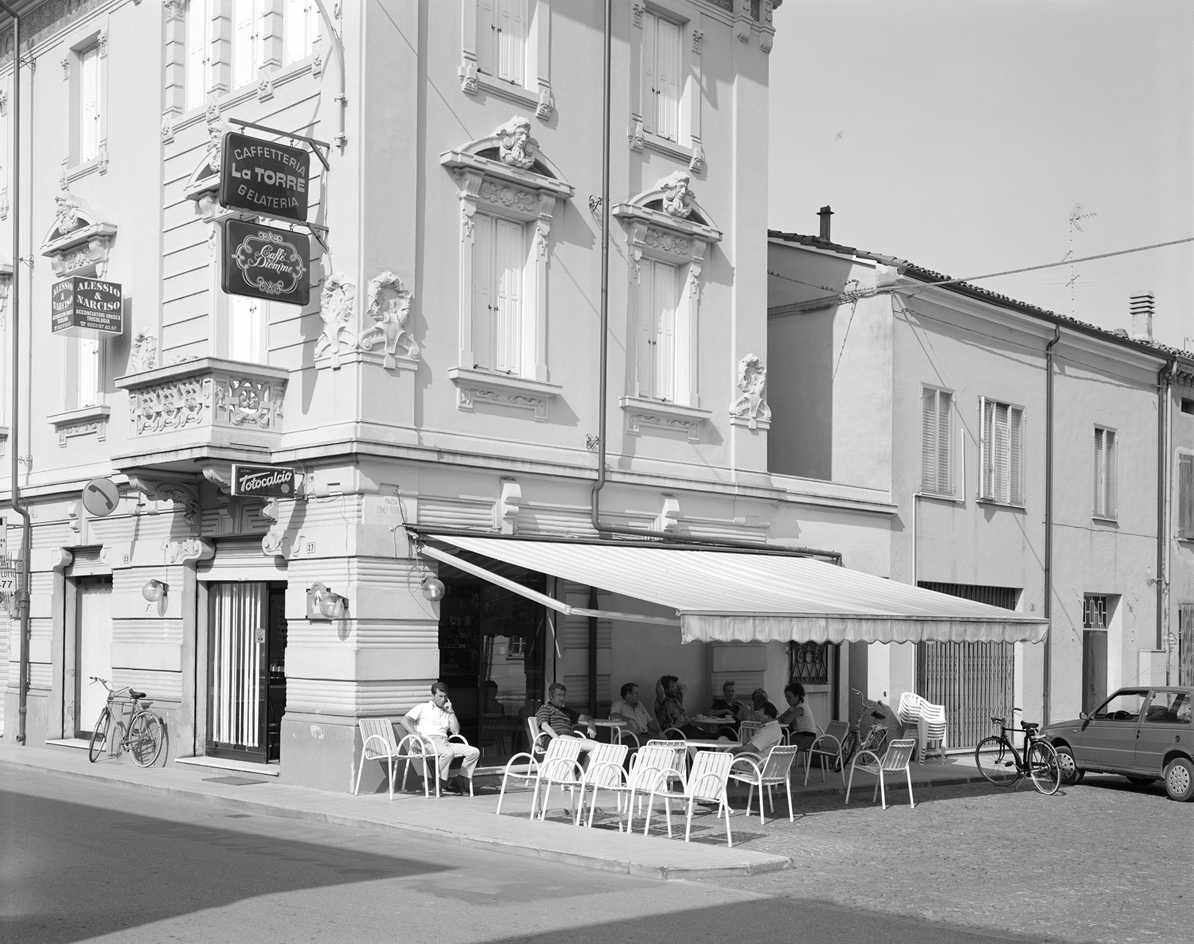
The buildings surrounding the town’s main square, pictured, remained virtually unchanged between Strand and Shore’s projects despite a four decade gap

‘A key feature of Italian life, at least to my New World eyes, is the presence of the traditional within the modern,’ says Shore
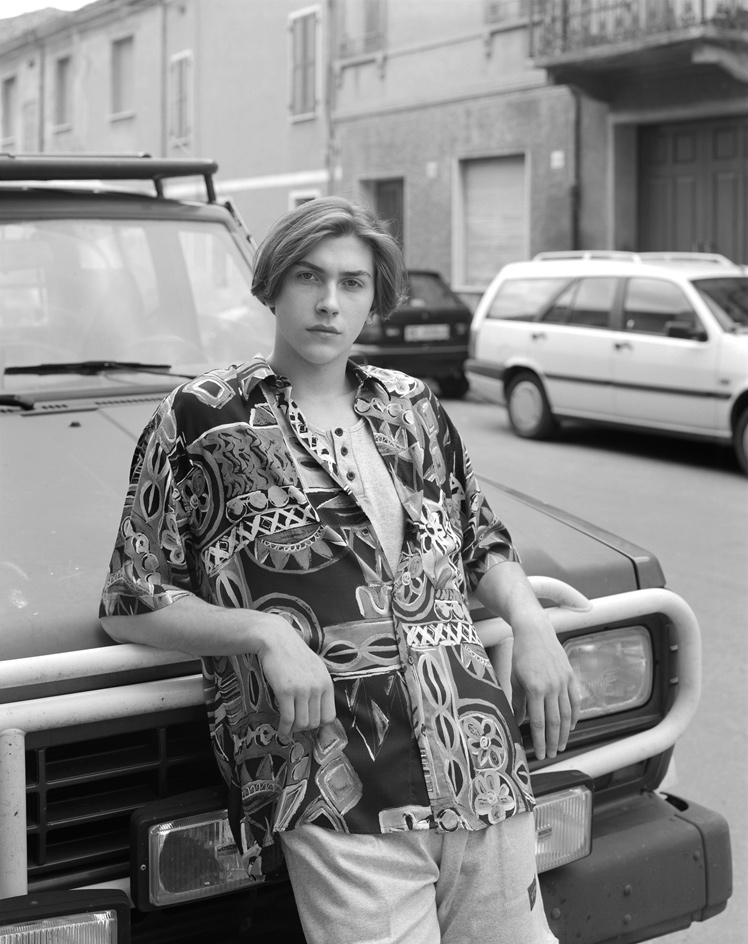
Although little has changed in the town, Shore’s images of Luzzara feel distinctly nineties – see the boldly printed shirts that seem to shriek colour even in black and white

Shore honed in on architectural details prevalent in the town, such as decorative wrought iron
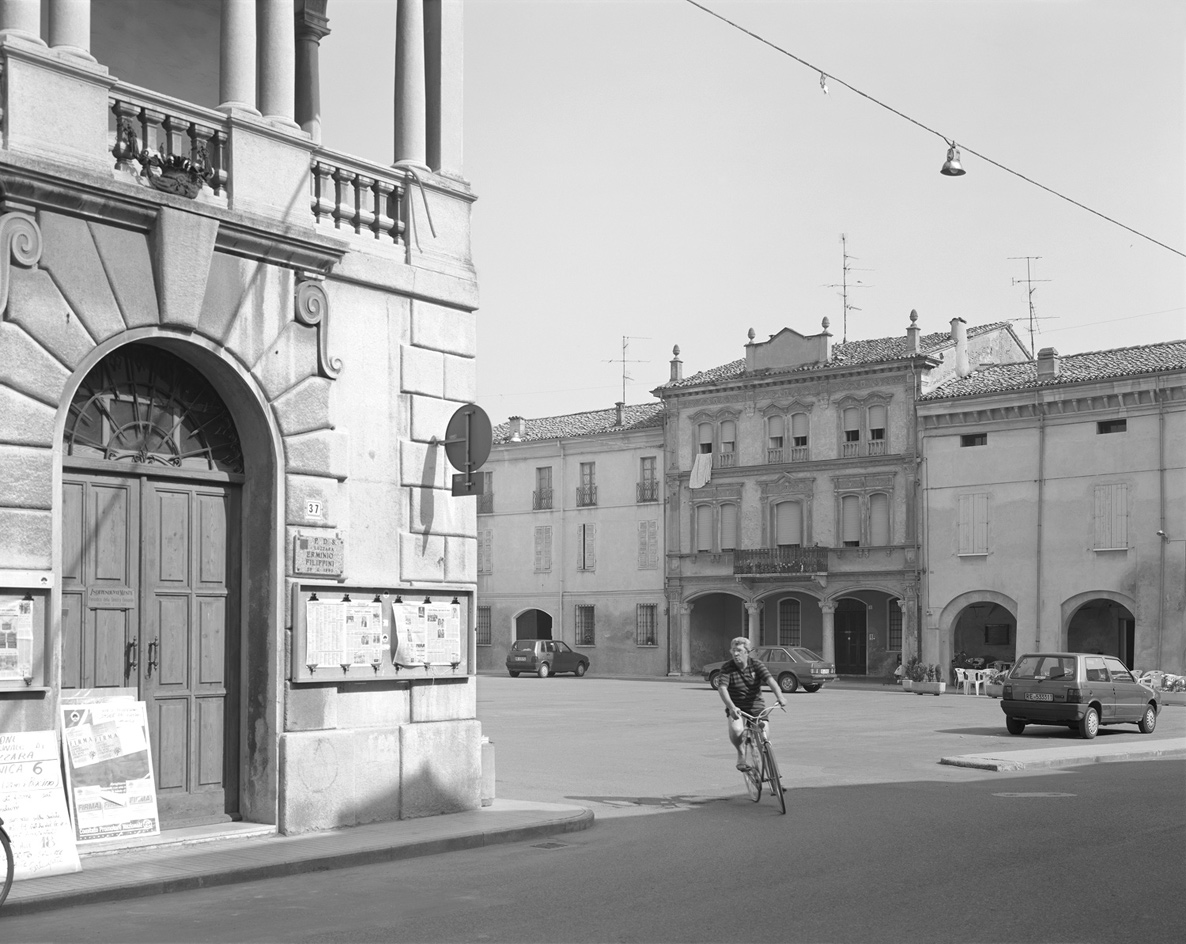
Bicycles are an omnipresent feature of Luzzara
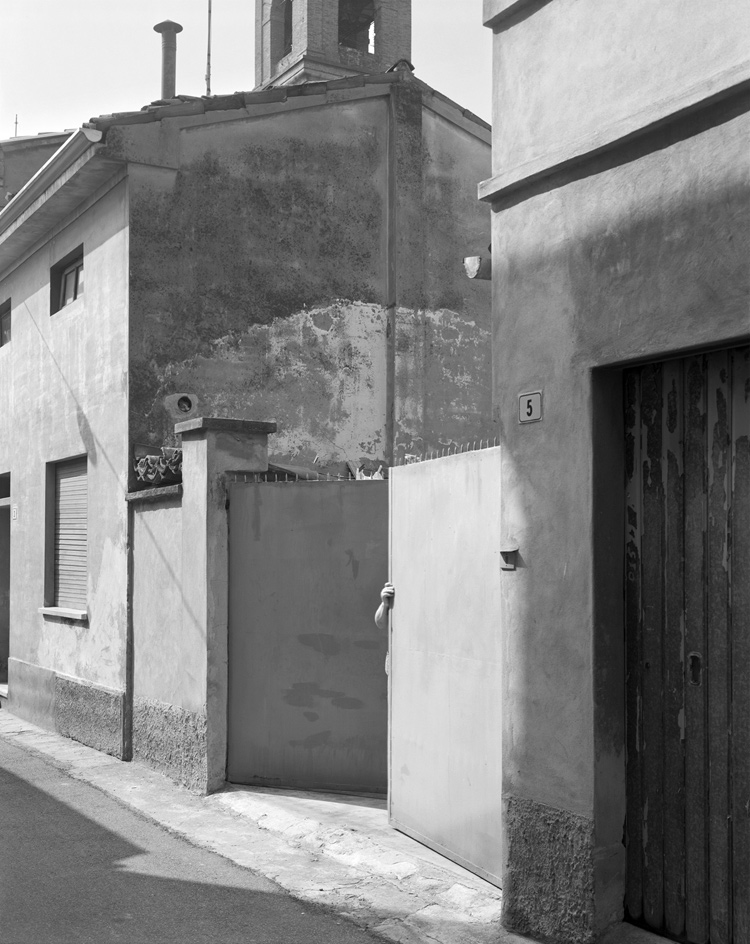
Light and shadow come to the fore in Shore’s photographs

Says Shore: ‘In a certain way, Strand’s work does not need simple updating, because the kinds of people and farms and landscapes he photographed still exist in very much the same form today’
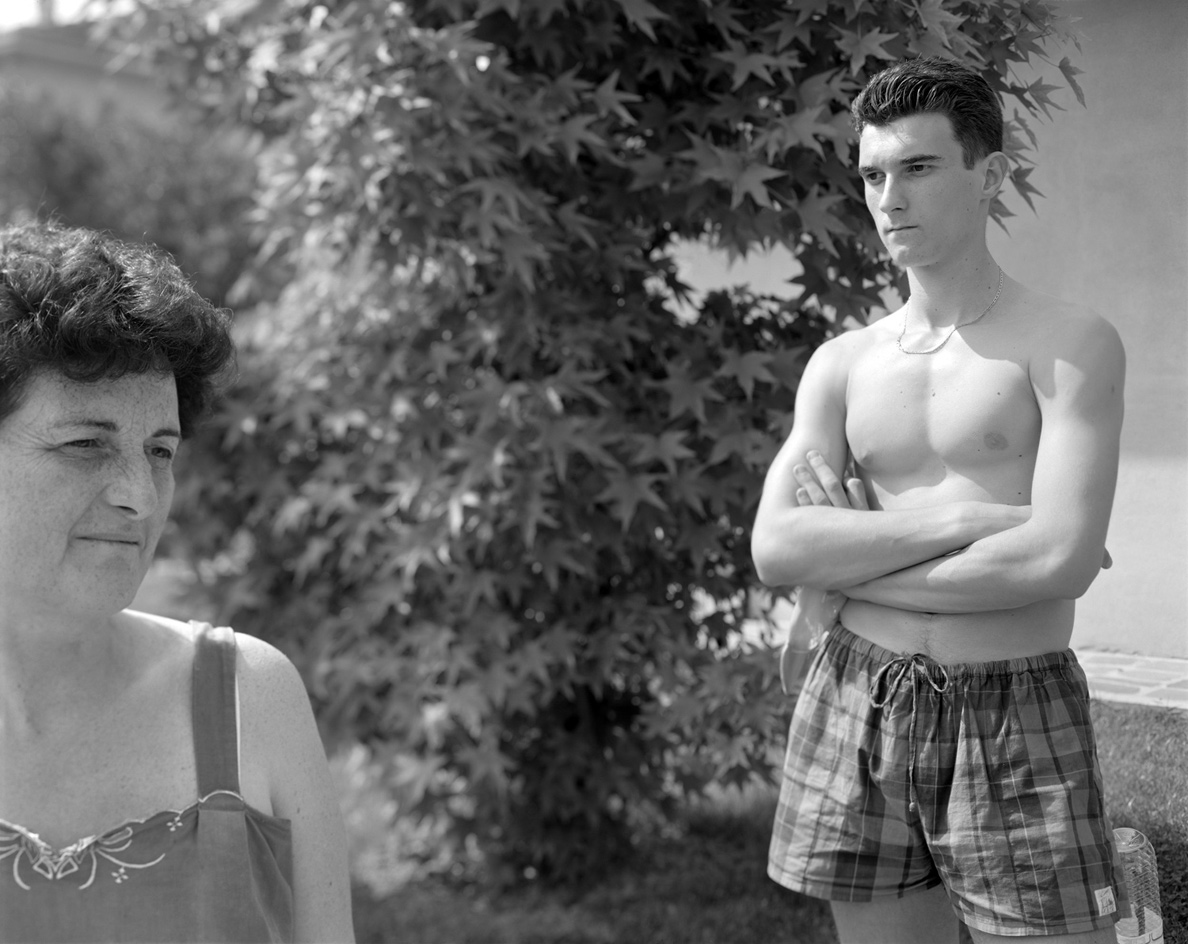
‘My aim, then, was to produce a companion volume to Un Paese,’ says Shore, ’to produce a group of pictures, which to the limit of the subjectivity of my vision, supplement Strand’s work’
INFORMATION
Published by Stanley/Barker, £35, edition of 1000. For more information, visit the Stanley/Barker website
Wallpaper* Newsletter
Receive our daily digest of inspiration, escapism and design stories from around the world direct to your inbox.
-
 Naoto Fukasawa sparks children’s imaginations with play sculptures
Naoto Fukasawa sparks children’s imaginations with play sculpturesThe Japanese designer creates an intuitive series of bold play sculptures, designed to spark children’s desire to play without thinking
By Danielle Demetriou
-
 Japan in Milan! See the highlights of Japanese design at Milan Design Week 2025
Japan in Milan! See the highlights of Japanese design at Milan Design Week 2025At Milan Design Week 2025 Japanese craftsmanship was a front runner with an array of projects in the spotlight. Here are some of our highlights
By Danielle Demetriou
-
 Tour the best contemporary tea houses around the world
Tour the best contemporary tea houses around the worldCelebrate the world’s most unique tea houses, from Melbourne to Stockholm, with a new book by Wallpaper’s Léa Teuscher
By Léa Teuscher
-
 ‘Dressed to Impress’ captures the vivid world of everyday fashion in the 1950s and 1960s
‘Dressed to Impress’ captures the vivid world of everyday fashion in the 1950s and 1960sA new photography book from The Anonymous Project showcases its subjects when they’re dressed for best, posing for events and celebrations unknown
By Jonathan Bell
-
 Daniel Arsham’s new monograph collates the works of the auto-obsessed American artist
Daniel Arsham’s new monograph collates the works of the auto-obsessed American artist‘Arsham Motorsport’ is two volumes of inspiration, process and work, charting artist Daniel Arsham’s oeuvre inspired by the icons and forms of the automotive industry
By Jonathan Bell
-
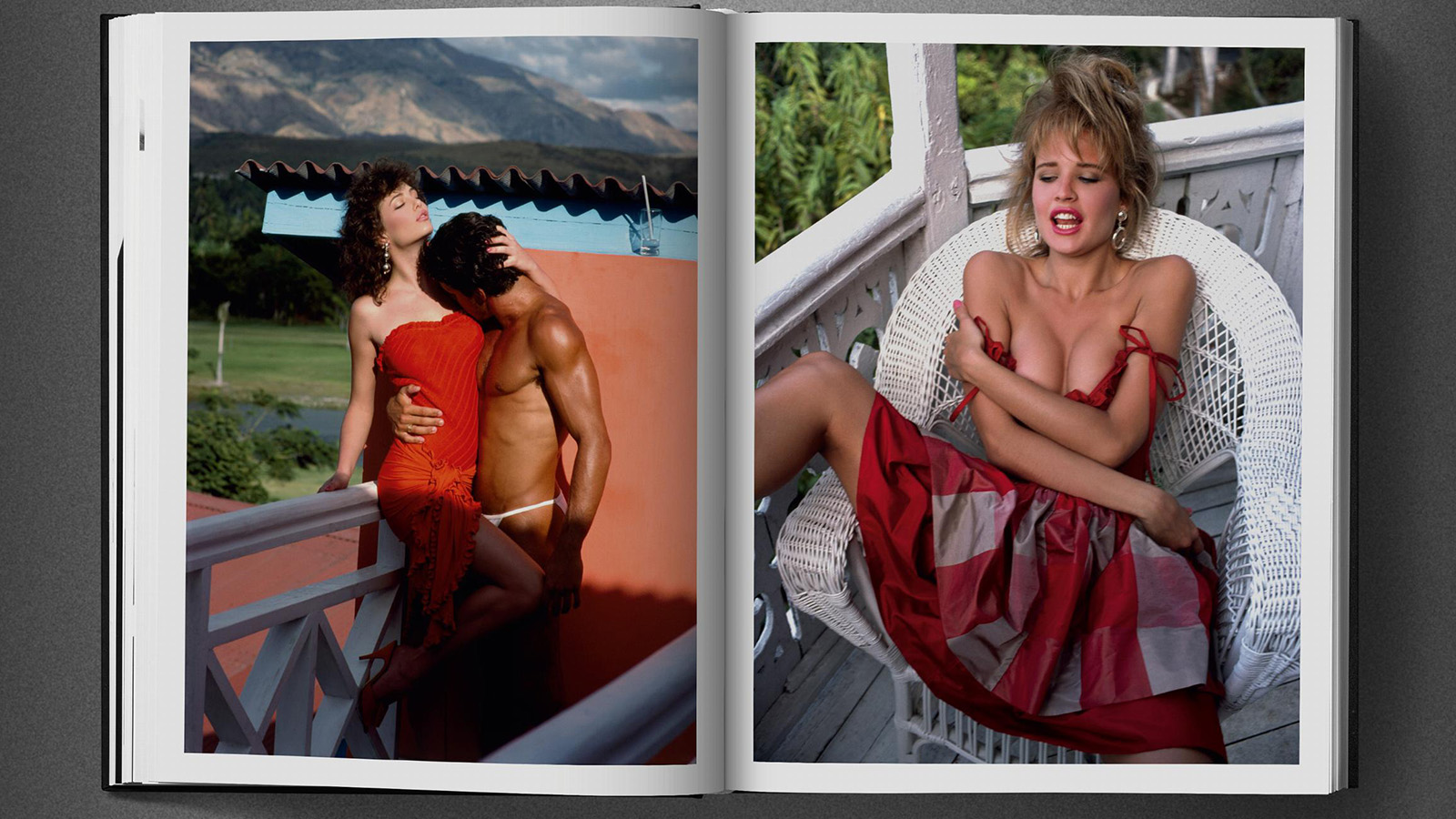 Era-defining photographer David Bailey guides us through the 1980s in a new tome not short of shoulder pads and lycra
Era-defining photographer David Bailey guides us through the 1980s in a new tome not short of shoulder pads and lycraFrom Yves Saint Laurent to Princess Diana, London photographer David Bailey dives into his 1980s archive in a new book by Taschen
By Tianna Williams
-
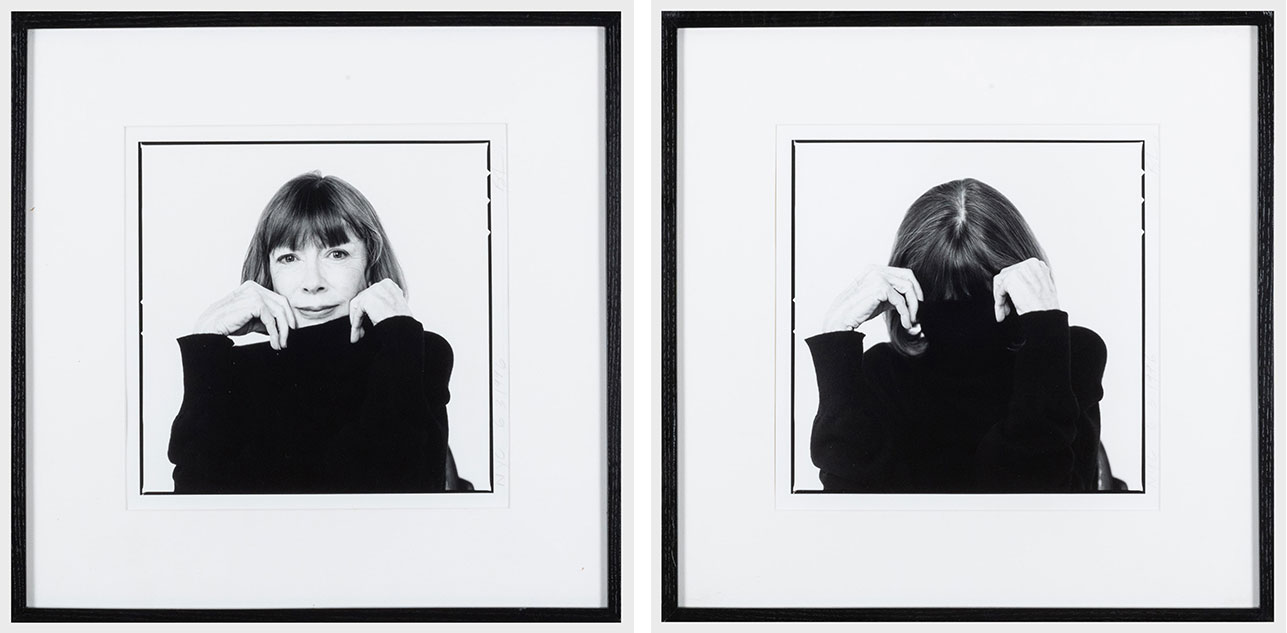 Inside Joan Didion’s unseen diary of personal relationships and post-therapy notes
Inside Joan Didion’s unseen diary of personal relationships and post-therapy notesA newly discovered diary by Joan Didion is soon to be published. Titled 'Notes to John', the journal documents her relationship with her daughter, husband, alcoholism, and depression
By Tianna Williams
-
 Carsten Höller’s new Book of Games: 336 playful pastimes for the bold and the bored
Carsten Höller’s new Book of Games: 336 playful pastimes for the bold and the boredArtist Carsten Höller invites readers to step out of their comfort zone with a series of subversive games
By Anne Soward
-
 Remembering Oliviero Toscani, fashion photographer and author of provocative Benetton campaigns
Remembering Oliviero Toscani, fashion photographer and author of provocative Benetton campaignsBest known for the controversial adverts he shot for the Italian fashion brand, former art director Oliviero Toscani has died, aged 82
By Anna Solomon
-
 Distracting decadence: how Silvio Berlusconi’s legacy shaped Italian TV
Distracting decadence: how Silvio Berlusconi’s legacy shaped Italian TVStefano De Luigi's monograph Televisiva examines how Berlusconi’s empire reshaped Italian TV, and subsequently infiltrated the premiership
By Zoe Whitfield
-
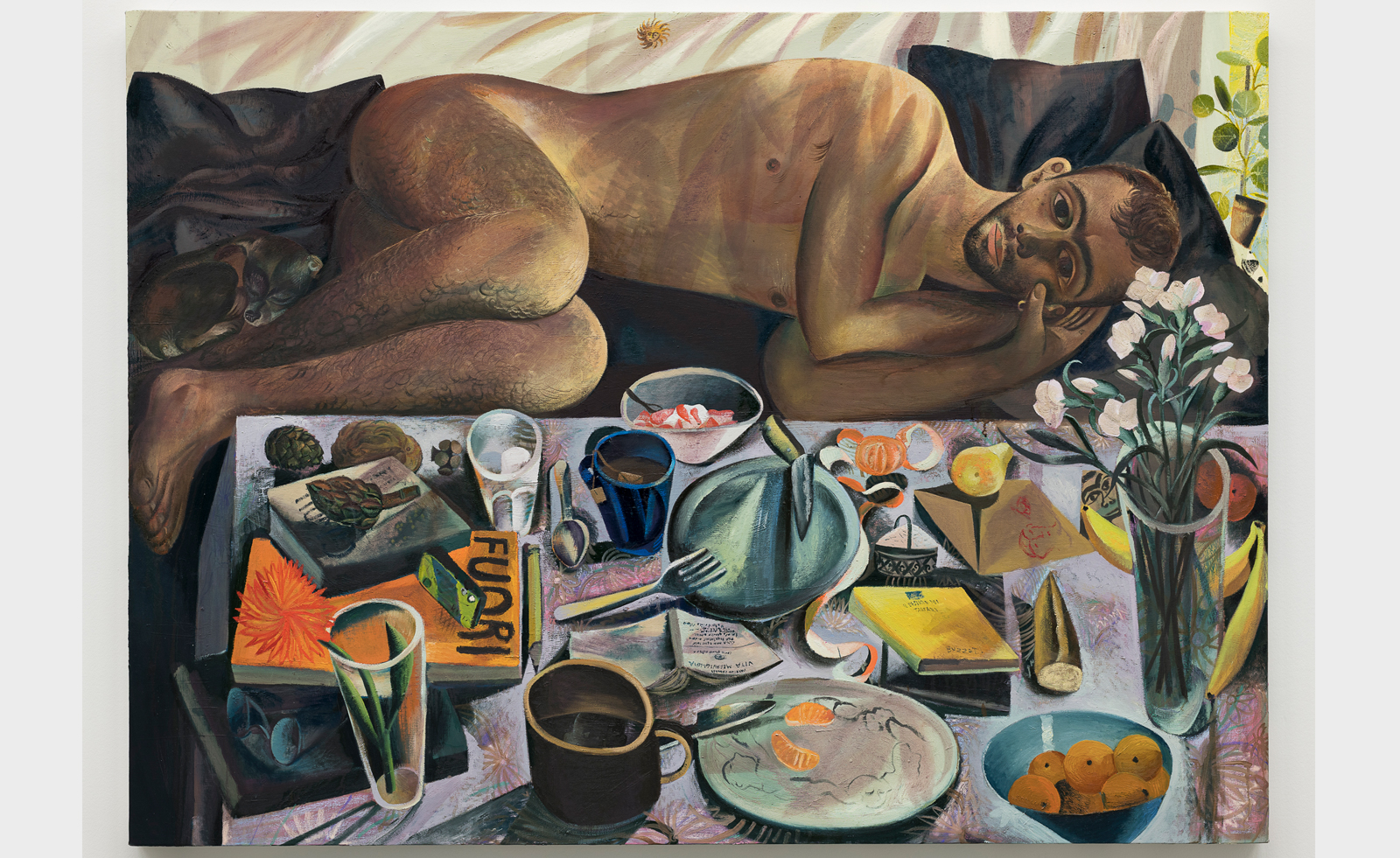 Louis Fratino leans into queer cultural history in Italy
Louis Fratino leans into queer cultural history in ItalyLouis Fratino’s 'Satura', on view at the Centro Pecci in Italy, engages with queer history, Italian landscapes and the body itself
By Sam Moore